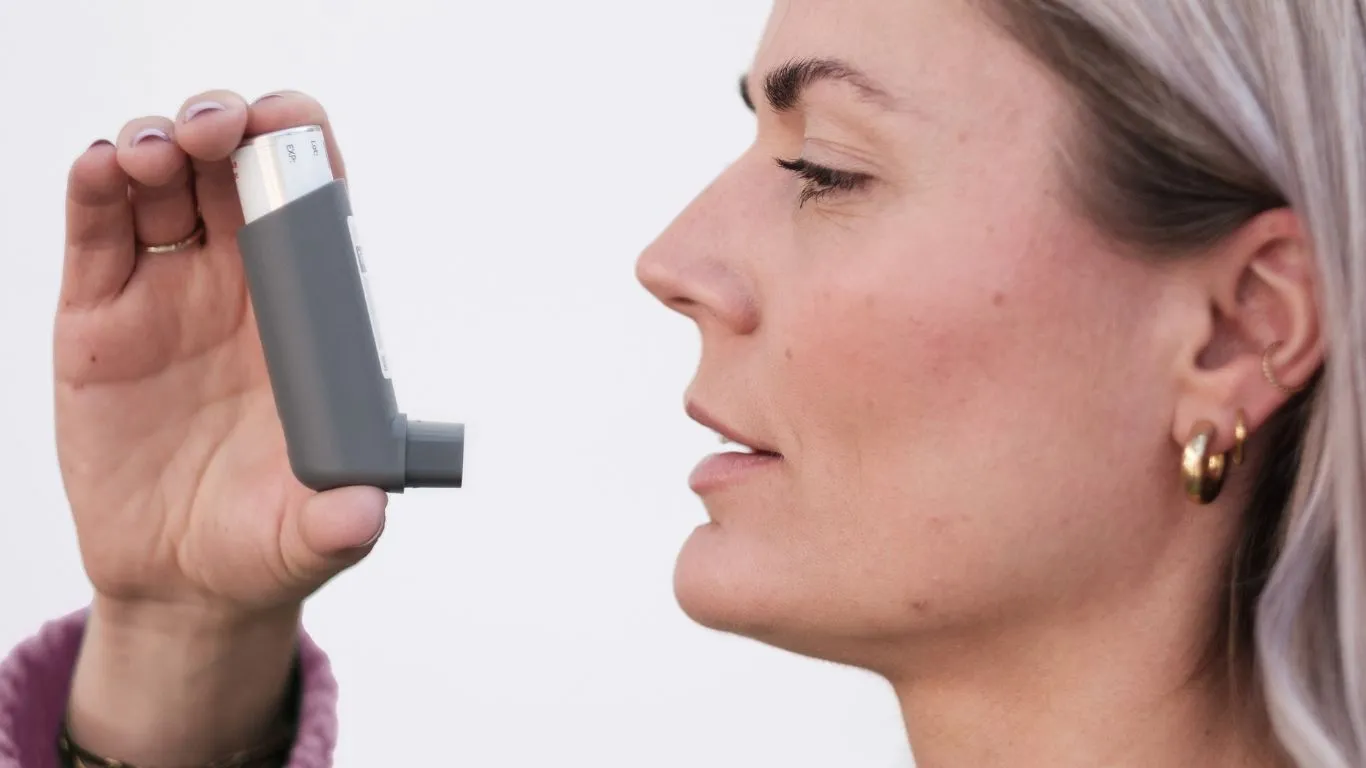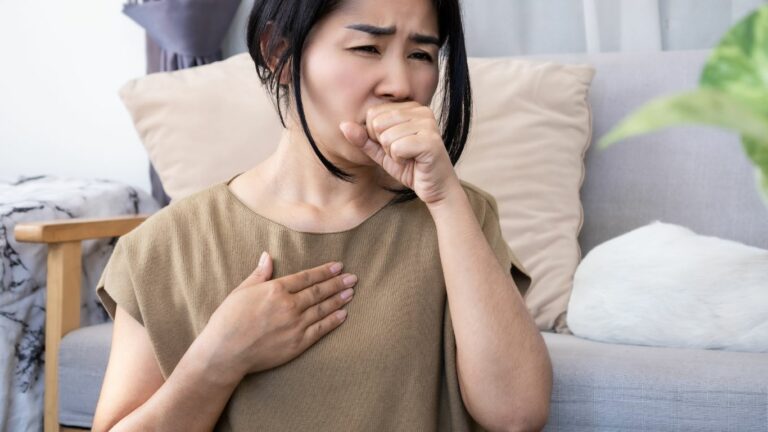Breathe Easy: How to Manage Asthma Symptoms While Traveling Smart
If you’re anything like me, travel is one of those things that feels like food for the soul—but when you’ve got asthma, it’s a whole other layer of planning, prep, and let’s be honest, a bit of anxiety. As a Pulmonary Nurse and someone who’s seen too many asthma flare-ups in unexpected places (airports, hotel lobbies, even at the top of scenic hikes), I know first-hand how important it is to get ahead of your symptoms—especially when you’re outside your normal environment. So, let’s talk about how to manage asthma symptoms while traveling, without letting it cramp your adventure vibe.
Why Traveling with Asthma Takes Extra Thought

Most folks without asthma don’t think twice about hopping on a plane or trekking through a dusty village in the middle of summer. But for us or our patients? One wrong move—say, forgetting a spacer or running out of a controller inhaler—can turn a relaxing trip into a stressful ER visit. And I’ve seen it happen, way more often than I’d like to admit.
When you’re on the road, you’re exposed to unfamiliar allergens, different altitudes, humidity changes, pollution, and even hotel cleaning products that can trigger symptoms. Plus, stress and disrupted sleep (hello jet lag!) can also mess with your breathing.
Common Travel Triggers for Asthma
- Dry airplane air that irritates airways
- High altitudes with thinner air
- Pollution in busy cities
- Hotel room allergens like dust mites or mold
- Stress (because let’s be real, travel isn’t always smooth sailing)
Step-by-Step Prep: What I Always Tell My Patients (and Do Myself)

Before you even book those tickets or start packing your passport, prep is everything. I always break it down for my patients into these simple, doable steps. And yeah, I follow them myself—because I’ve had one too many close calls.
1. Visit Your Healthcare Provider Before You Go
This might sound obvious, but a quick check-in a couple of weeks before your trip can make a huge difference. We go over asthma control, adjust meds if needed, and review your asthma action plan. If you’re going somewhere high-altitude or super humid, I’ll even tweak your prescriptions a bit in advance.
2. Pack a Travel-Smart Asthma Kit
Here’s what I always carry—and recommend to every single asthmatic traveler I’ve worked with:
- Rescue inhaler (carry-on, not checked!)
- Controller inhaler if prescribed
- Spacer – yep, even if it’s bulky
- Nebulizer or portable version if needed
- Written Asthma Action Plan – physical and digital copies
- Allergy meds if allergies are part of your trigger list
- Steroids (short course, if prescribed for emergencies)
I also remind people to bring extras. Ever try to explain Fluticasone to a pharmacist in rural Thailand? Yeah…don’t risk it.
3. Research Your Destination’s Air Quality and Climate
This one’s a hidden gem tip. Apps like AirVisual or even Google Maps now show air quality levels. If the AQI’s looking nasty? At least you’ll know to bring a mask or plan more indoor activities. Also, dry cold air in the mountains can be brutal on sensitive lungs—pack accordingly.
4. Book Asthma-Friendly Stays
Hotel rooms can be sneaky asthma minefields. I always request:
- Non-smoking rooms (obvious, but easy to forget)
- No feather pillows (unless you like waking up wheezing)
- Allergy-proof bedding if available
Sometimes I even bring my own pillowcase—can’t tell you how many reactions I’ve dodged with that one tiny move.
Air Travel and Asthma: What You Need to Know

Airplanes are their own special brand of asthma-triggering madness. From recycled air to close quarters with random perfumes and colds, it’s a recipe for flare-ups if you’re not prepped. I’ve flown with dozens of patients and here’s what works best:
Before You Board
- Use your controller inhaler the day of travel—don’t skip it because you’re busy packing.
- Take a puff of your rescue inhaler about 30 minutes before boarding if your provider recommends it (especially for long flights).
- Wear a mask—not just for germs, but to warm the air you’re breathing in.
In-Flight Tips
- Stay hydrated! Cabin air is bone dry.
- Avoid alcohol or caffeine—they can dehydrate you and irritate airways.
- Let flight attendants know you have asthma, just in case.
- Keep meds in your personal item, not the overhead bin.
Honestly, once you’ve got a system down, travel gets easier. It’s just about being one step ahead—and not being shy about advocating for yourself (or your lungs!).
Exploring Outdoors Without Worry: Asthma-Friendly Adventures

Just because you have asthma doesn’t mean you should sit out all the fun stuff—like that sunset hike or snorkeling in turquoise waters. I’ve always told my patients, and I live by this myself: you can absolutely be active, you just need to be smart about it.
I remember one trip to Colorado—thin air, chilly mornings, and a scenic trail that practically begged to be hiked. I was cautious, paced myself, took my inhaler beforehand, and guess what? Zero issues. It’s all about preparation and self-awareness.
Before Outdoor Activities
- Pre-medicate with your rescue inhaler 15-30 minutes beforehand, especially if exercise-induced asthma is your thing.
- Check the weather—wind can stir up pollen, and cold can tighten airways fast.
- Warm up slowly to help your lungs adjust.
During the Activity
- Take breaks as needed. It’s not a race.
- Pay attention to early warning signs—tight chest, mild wheezing, or feeling winded too soon.
- Stay hydrated, especially in heat or dry air.
Post-Activity Cool Down
Let your body cool down gradually. Abrupt stops can actually trigger bronchospasm in some people. Stretch, slow your breathing, and use your inhaler if needed.
How to Manage Asthma Symptoms While Traveling in Different Climates

Another layer I always bring up in consults is how different climates can seriously mess with asthma control. Whether you’re headed for a beach escape or a snowy mountain town, environment matters.
Humid and Tropical Destinations
Humidity makes the air feel heavier, which can be tough on the lungs. Mold spores and pollen also thrive in these places. I had a patient who traveled to Costa Rica and ended up needing daily rescue inhaler doses until they stayed in an air-conditioned hotel room with a HEPA filter. Game changer.
- Use a dehumidifier if available
- Keep windows closed in high pollen areas
- Shower and change clothes after outdoor excursions
Cold Weather Travel
Chilly air can dry and irritate your airways super quickly. Scarves and heat-exchange masks are gold. One trick I use is breathing in through my nose and out through my mouth—it warms the air a bit before it hits my lungs.
- Layer up and keep your mouth covered outdoors
- Warm up indoors before going out
- Don’t overexert too fast in cold air
High Altitude Destinations
These places are gorgeous—but man, they can be brutal. Less oxygen and thinner air can feel like a challenge even for folks without asthma. So, I always advise patients to go slow and monitor their symptoms closely. Altitude sickness and asthma flare-ups are not a great combo.
If I know someone’s heading to altitude, I usually recommend:
- Arriving early to acclimate gradually
- Light activity for the first few days
- Close monitoring of symptoms, especially at night
Food, Drink, and Medication Interactions Abroad

Okay, let’s talk food and meds. You’d be surprised how often travel-related asthma flares come from unexpected places—like a seemingly innocent street taco or a local wine tasting. Sulfites, food dyes, preservatives… all those little ingredients can sneak up and cause big trouble.
What to Watch For
- Sulfites in wines, dried fruits, and some seafoods
- Artificial dyes in candies and drinks
- Cross-contamination in local cuisine (especially if you have food allergies too)
I always suggest carrying antihistamines just in case and asking questions when dining out. One trick I’ve picked up is learning a few key phrases in the local language like “I have a medical condition” or “No sulfites, please.” A little prep goes a long way.
Sticking to Your Medication Routine
Time zones can seriously mess with your medication schedule. When I flew to Japan, I set alarms to make sure I took my controller inhaler at the right times, even if it meant a 3 AM puff on day one. It helped me stay stable through the whole trip.
Tips that help:
- Use your phone or travel watch to set reminders
- Keep a written medication schedule adjusted to local time
- Avoid skipping doses, even if the day gets chaotic
Managing asthma symptoms while traveling isn’t about avoiding fun—it’s about stacking the odds in your favor. You get to see the world and breathe easy doing it. And believe me, when you’ve got your plan locked in and your lungs feeling good, every experience hits differently.
Staying Healthy Abroad: Hygiene, Sleep & Stress Management

Let’s be real: travel can be exhausting. New time zones, unpredictable schedules, unfamiliar food… it’s a lot. And when you’ve got asthma, your body’s already working a bit harder than most to keep things in balance. That’s why taking care of the “boring basics” like sleep, hygiene, and stress is actually a power move.
I’ve seen patients who were totally stable before their trip, but one night of poor sleep, plus a sketchy street meal, and boom—full-blown flare-up. Trust me, prioritizing your body’s needs isn’t being dramatic—it’s being smart.
Prioritize Quality Sleep
- Stick to your routine as much as possible—especially with nighttime controller meds.
- Bring items that help you sleep—like earplugs, a sleep mask, or even a white noise app.
- Watch out for nighttime triggers like hotel pillows, unfamiliar detergents, or dry air. A portable humidifier can be a lifesaver.
Stay on Top of Hygiene
Asthma can flare up with colds, respiratory infections, or exposure to viruses. That’s why I always pack hand sanitizer, disinfectant wipes, and my own pillowcase (seriously—it’s an MVP move). Avoid crowded, poorly ventilated indoor spaces if you’re feeling off.
Mind Your Stress Levels
We don’t talk enough about the role of stress in asthma. It’s real. I had a patient who experienced stress-induced asthma every time she flew—not from the air, but from travel anxiety. Deep breathing exercises, grounding techniques, or even light yoga can really help.
Emergency Planning: Just in Case

No one wants to think about emergencies while traveling—but let me tell you, having a solid plan can take the edge off. As a nurse, I’ve helped patients create “just-in-case” travel game plans that have actually saved lives.
Find Medical Facilities Ahead of Time
- Use apps or maps to locate hospitals or clinics near where you’re staying.
- Bookmark the local emergency numbers in your phone (they vary by country).
- Know a few essential phrases in the local language like “I have asthma” or “I need medical help.”
Have Backup Meds & Prescriptions
Always, always carry extra meds—because delays happen, luggage gets lost, and pharmacies abroad might not carry what you need. I once had a patient whose checked bag with all their meds got rerouted to another country. Lesson learned: essentials go in your carry-on!
- Pack extra inhalers (rescue and controller)
- Bring a written copy of your prescriptions
- Label everything clearly—inhalers, nebulizer parts, even allergy meds
Use Medical ID
This one gets overlooked, but I think it’s super important: wear a medical ID bracelet or have digital medical info accessible on your phone. Emergency responders need fast, clear info—and it could make all the difference.
Bonus Tips from the Road
Over the years, I’ve picked up a few extra hacks that might seem small but actually make travel way smoother when you’ve got asthma:
- Use a travel humidifier—hotels can be really dry, and it helps your lungs relax overnight.
- Pack saline nasal spray—it keeps airways moist, especially in planes or dry climates.
- Get travel insurance that covers pre-existing conditions. It’s boring paperwork, but totally worth it.
- Set alarms on your phone for meds if time zones throw you off.
One of my favorite travel moments was hiking through the Andes with a small group, inhaler in my vest pocket, feeling confident because I had done all the prep. It reminded me why I tell every patient—you can live your life fully with asthma. It just takes a little more intention.
References
- National Institutes of Health
- Health.com
- Centers for Disease Control and Prevention
- Asthma and Allergy Foundation of America
Disclaimer
This article is for informational purposes only and based on my experience as a Pulmonary Nurse. It does not replace professional medical advice, diagnosis, or treatment. Always consult your healthcare provider before making changes to your asthma management plan, especially when traveling or altering medications.

Bianca Nala is a compassionate Nurse Practitioner with a strong background in primary and respiratory care. As a health writer for Healthusias.com, she combines her clinical expertise with a talent for clear, relatable storytelling to help readers better understand their health. Bianca focuses on topics like asthma, COPD, chronic cough, and overall lung health, aiming to simplify complex medical topics without losing accuracy. Whether she’s treating patients or writing articles, Bianca is driven by a single goal: making quality healthcare knowledge accessible to everyone.






